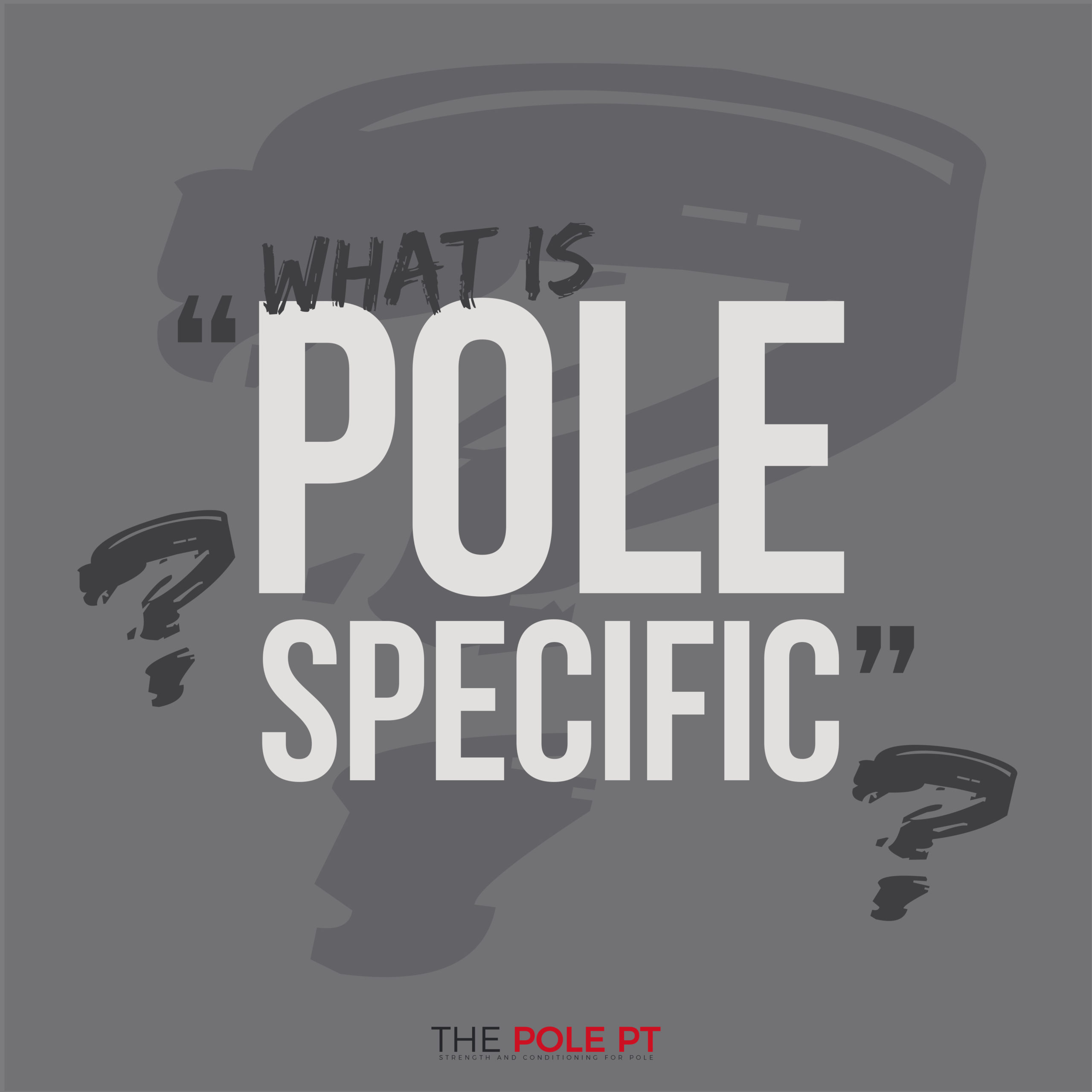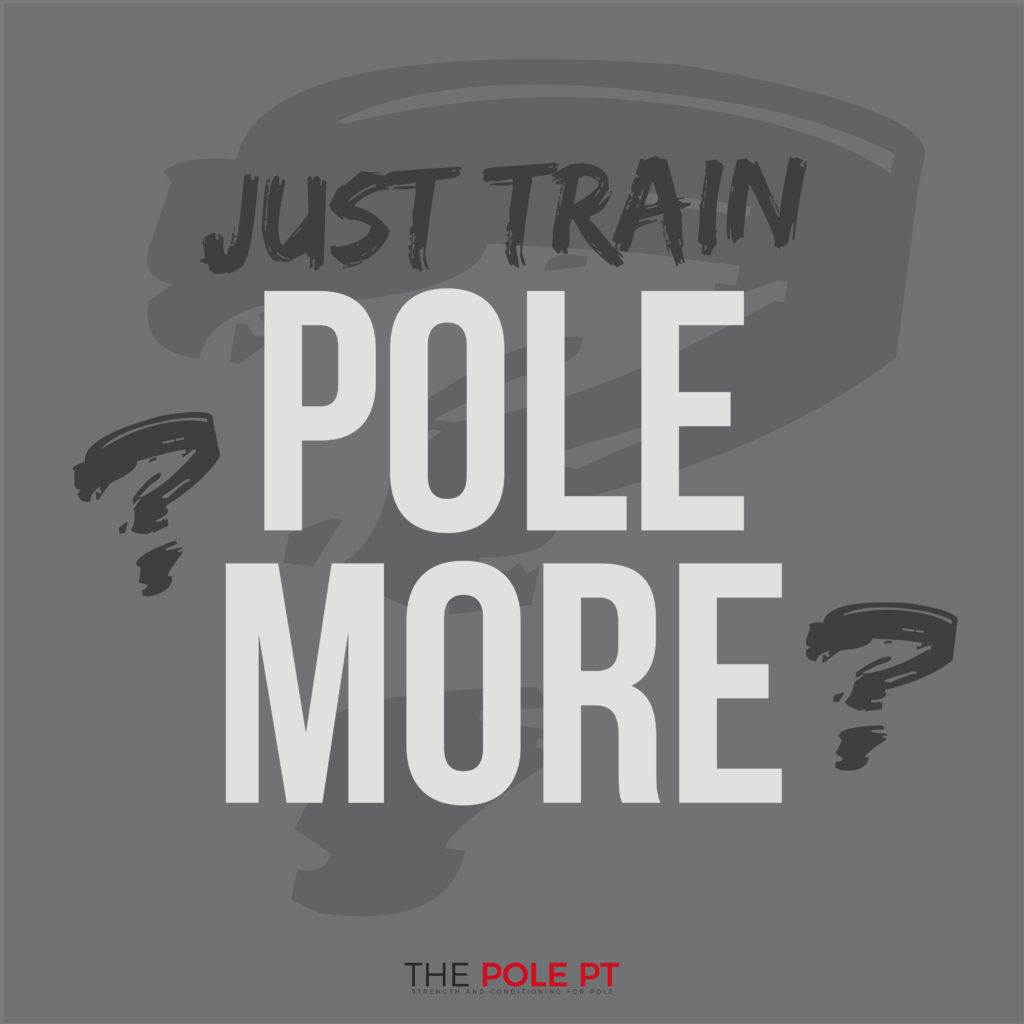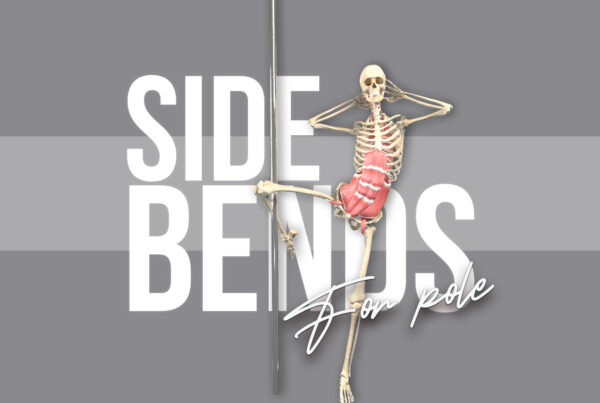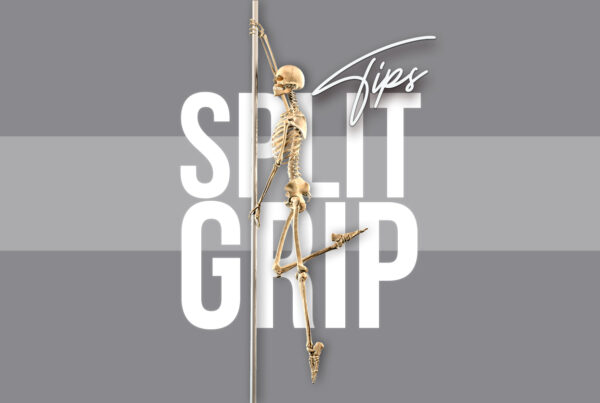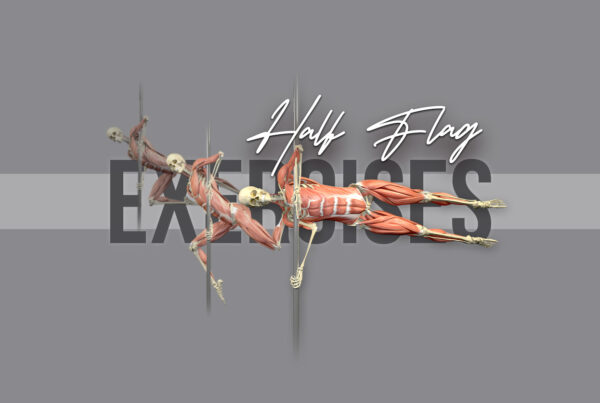Pole dancers, say hello to your new training friend: SPECIFICITY!
‘Specificity’ = the principle that our body will adapt to the specific demands we place on it.
It’s a key principle of strength and conditioning that plays a BIG part in how sport-specific exercise programming is structured. It dictates that training should be relevant and appropriate to the sport for which an athlete is training in order to produce a training effect.
Put simply, it’s the ‘specific’ part of ‘sport-specific’ training!
Example…
A runner consistently places a cardiovascular demand on their body – their body responds by improving its cardiovascular fitness.
A powerlifter lifts heavy weights – their body adapts by improving its muscular strength and power.
The runner is adapted more specifically for running, the powerlifter is adapted more specifically for lifting.
In other words: you get good at what you train! Magic!
BUT‼ That’s not the whole story. There’s a bit more to this principle of specificity that we need to consider!
What does it mean in practice? And how should specificity influence how we go about organising our training for pole?
Well, grab a cuppa and let’s do this blog thing…
Just train pole more?
If you’re struggling with your invert / shoulder mount / leg hang / [insert literally ANY pole goal here], ask the internets for guidance and you’ll often hear the response: “just train [insert said pole move here] more!”.
I see this “just train pole more” suggestion a lot… and I get it!
Pole is a skill. Like all skills, you certainly won’t get better at it without practice. But this approach is an oversimplification of the ‘specificity’ principle.
The principle of ‘specificity’ dictates that training should be *relevant* and *appropriate* to the sport for which an individual is training in order to produce the desired effect BUT it doesn’t just mean ‘train the sport itself and that alone’!
It means, more broadly, training to create the neuromuscular and metabolic adaptations that will enhance the physiological qualities required for that sport.
That sounds complicated, but it simply means training that will produce adaptations (to your heart, lungs, muscles, nervous system… etc) that are going to make you physically better at the sport you love.
Footballers train for speed and power, not just with technique drills on the pitch, but with exercises in the gym that will help them to more efficiently develop reactivity and power production by applying force rapidly, like plyometric exercises and explosive strength training. This kind of training cross-over applies across the board to all sports – and pole is no different!
If you only train the sport itself, you miss out on the HUGE crossover benefit of off-the-pole training to your development as a robust and well-rounded pole dancer.
Friends, you CAN develop and encourage the physical qualities needed to perform well on the pole, away from the pole. That’s EXACTLY what specificity and pole-specific training is all about
What is pole specific training?
So, let’s work through this logically…
If we want to create a training programme that helps encourage those physical adaptations that will make us better at pole, we first need to consider what those adaptations are.
What exactly are those physical qualities we’re aiming for?
This requires an analysis of the characteristics of pole dance! Now we’re talkin’!
For instance…
The movement patterns we do in pole are typically:
• multi-joint movements;
• working in all planes of motion (usually all at once – yeah, we like to be extra like that);
• at the end ranges of our flexibility;
• open chain;
• performed in the air, usually while spinning and upside down!
We challenge our muscles through a combination of concentric, eccentric and isometric contractions.
We incorporate lots of changes of direction and elements of speed and power with the more dynamic movements that we do.
We utilise all 3 energy systems, to different extents depending on whether we are training in a class, or performing a routine.
Following our principle of specificity, a training programme for pole should therefore look to improve these specific elements in order for it to be pole-specific and have the desired effect of improving our performance on the pole. Thank you, science!
The build-up to specific
So far, we’ve established:
1. If we want our training to improve our pole performance, it needs to be *specific* to pole; and
2. What those actual *specifics* are.
So… what next?
Because progressive overload, unfortunately we can’t just jump straight in at the deep end with this stuff.
Those more specific elements first require a foundation.
There is a logical order to building fitness, strength and flexibility. Following that logical order, for instance, we really ought to build strength in closed chain movements before we move to open chain movements; we should get our bilateral movements super solid before progressing to unilateral ones, and we want to be bossing those movement patterns in a stable position before adding elements of instability.
We need to walk before we can run.
In strength and conditioning, specificity always leads the way, but there is a process to follow.
This is why a sport-specific program will always begin with general preparatory work before progressing to gradually become more and more sport-specific.
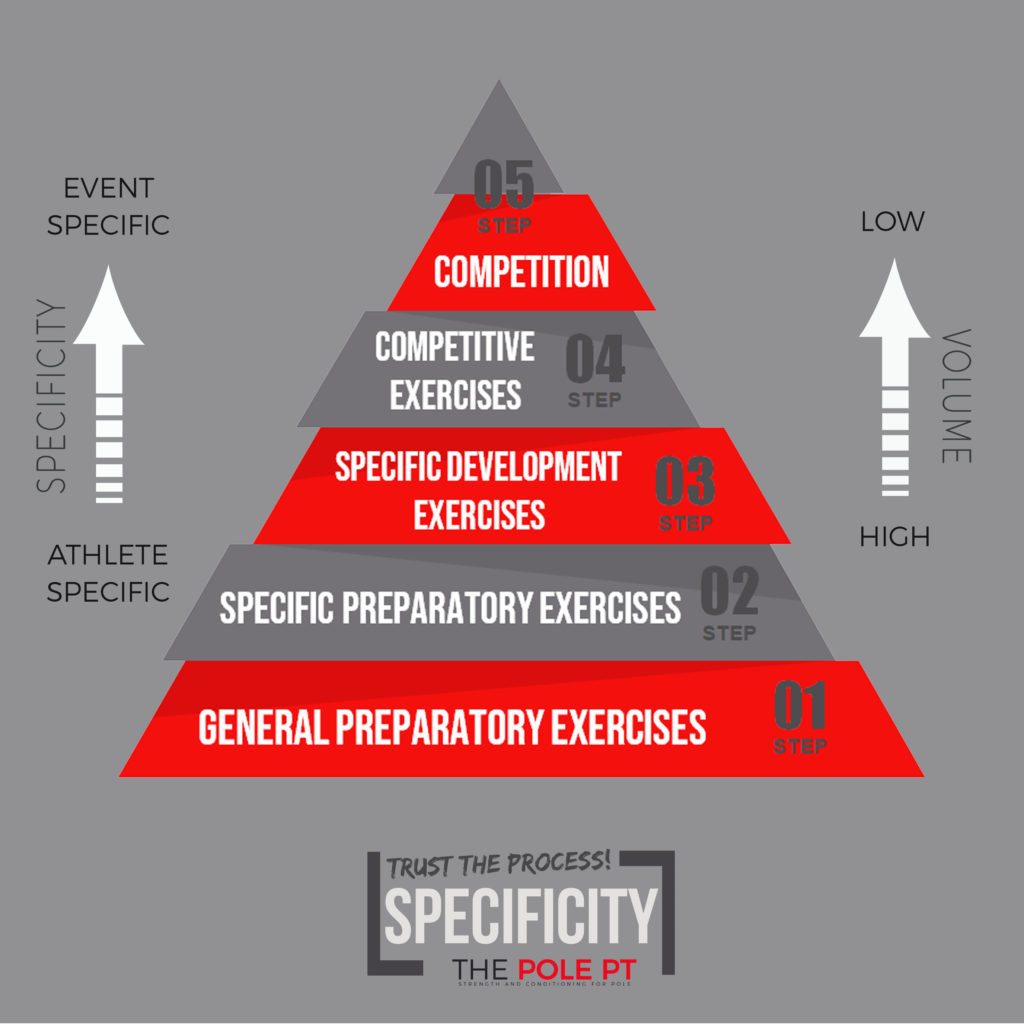
In an ideal world, we’d start our foray into pole training with this foundation of general preparedness and build logically from there, but of course, life rarely gives us the benefit of logic, especially when it comes to pole dance.
Most of us stumbled upon pole in adult life, many of us without any athletic background or any training experience at all. But in our quest to try and nail the latest Instagram trick *without* adherence to these long-established practices of sports science, we can sometimes skim over the most important step: that solid foundation on which everything else is built.
This is why it’s important to work on foundations – and it’s never too late to incorporate general preparatory work into your training, even if the reality is that you are doing it alongside your very skill-specific training on the pole. 😃
Even if you don’t consider yourself an ‘athlete’, you’re not competing or you’re just not interested in the finer details of exercise programming, having some regard to overarching principles like ‘specificity’ can still help guide your approach and help you optimise the way you train for pole for the best results.
Key take-aways on training specificity for pole
Yes, we get good at what we train and repetition is important for skill development. But that repetition should be built on a strong physical foundation.
That foundation can be built through strength and conditioning that begins more general and gradually becomes more and more specific as we layer onto it in the direction of our pole goals.
Those very specific pole goals require very particular neuromuscular and metabolic adaptations. It is those adaptations that lead the way in exercise programming. They determine what exercises we need to include (or not) and what preparatory work is needed to get us there safely.
How specific is YOUR pole training? Do you include general preparatory work and pole-specific training away from your pole? If so, do you know what adaptations you’re purposefully working towards?
If you’d like to fully nerd-out on pole specific training, you might like my book – Strength and Conditioning for Pole which is available now in paperback or in Ebook format!


